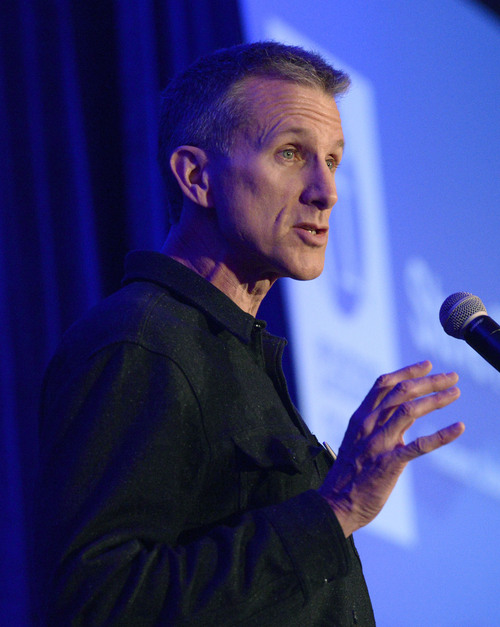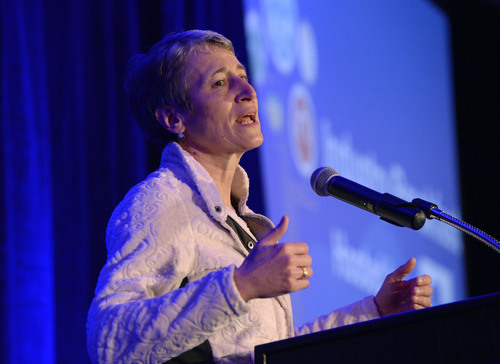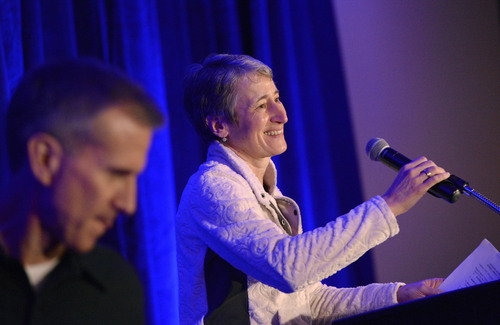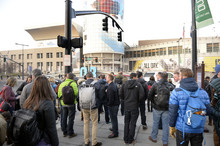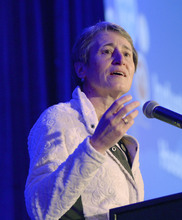This is an archived article that was published on sltrib.com in 2014, and information in the article may be outdated. It is provided only for personal research purposes and may not be reprinted.
The political climate in 1933, when the Civilian Conservation Corps came into being, was certainly much different from the present gridlock seen in Washington, D.C.
Franklin Roosevelt proposed the idea of putting men to work on public works projects on March 21 of that year. Ten days later, both houses of Congress approved the formation of the CCC. Eight days after that, the first employee was hired. In another 10 days, the first camp was up and running in Virginia.
Before the program ended, 250,000 young men had planted 2 billion trees, created 13,000 miles of trails, developed modern firefighter techniques, created campgrounds and put in flood-control measures, many of which are used to this day.
Interior Secretary Sally Jewell reflected on that Wednesday as she delivered the keynote to the Outdoor Industry Association's Industry Breakfast before the start of the annual Outdoor Retailer Winter Market trade show at the Salt Palace in downtown Salt Lake City.
"Things can move quickly when they want them to," said Jewell. "But we're not moving so fast in Washington, D.C."
Until being tapped by President Barack Obama to be Interior secretary last year, Jewell usually attended Outdoor Retailer's winter and summer shows as the CEO of gear giant REI. And as she dreams of creating a 21st Century Conservation Service Corps to put 100,000 youths and veterans to work on needed outdoor projects, she is turning to the private sector to fund it.
Her goal is to raise $20 million in private funds and to recruit 1 million volunteers in the next four years to help do maintenance on public recreation facilities and complete conservation projects across the country while giving youths and veterans meaningful work.
"The difference between the old CCC and the 21st Century CCC is the original was 100 percent paid for by the U.S. government," Jewell said at a news conference after the breakfast. "We are in a different era where the federal government is not going to write a big check for this to happen. So we are calling on the private sector to be a partner with us, not just in providing financial resources, but engaging companies with us as volunteers. There is nothing better than working with your team in the great outdoors."
She said that coming into her Cabinet job knowing her time is short made her feel like a sprinter approaching the finish line. She said the only way to make lasting change is to create programs that make common sense to the career staff at the agencies who will implement them after a change in administrations.
Jewell said her two biggest goals were to create the new type of CCC she described in her speech and to manage public landscapes in a more holistic way, using science and consensus-building among diverse interests to see if agreement might be reached on what lands are important to conserve and which should be developed.
The Interior secretary stressed several times the importance of working with local and state officials as well as conservation groups, hunters, ranchers, recreation vehicle enthusiasts and developers to solve public-lands issues. She said that would be a better approach than states trying to take over ownership and management of federal lands.
She said Utahns and Americans learned the value of their public lands when national parks and some recreation areas were closed during the government shutdown. But when asked if the federal government would reimburse Utah, which paid to open its five national parks early, she said that she doesn't have the power to obligate the federal government to pay anything.
"If Utah was to be reimbursed by the federal government for its payment to the National Park Service to open the parks," she said, "it would have to come from Congress."
Jewell said she was not familiar with a proposal to increase the size of Canyonlands National Park.
At the breakfast, the federal official said four trends were impacting everything her agency was trying to do: climate change, lack of tax dollars, changing demographics and the importance of the outdoor industry and outdoors to the economy.
Perhaps the day's biggest message was the importance of getting youths involved in the outdoors.
Jennifer Mull, chair of the Outdoor Industry Association Board, said the average American boy and girl each day spends 30 minutes outside and seven hours in front of an electronic screen of some sort.
"The federal public lands system is this industry's basic infrastructure for getting people outdoors," said Steve Rendle of the VF Outdoor and Action Sports Coalition, which sponsored the breakfast. "Engaging more consumers, especially youth, is important to our industry. We need to get youth to love the outdoors the way we do."
Jewell brought two members of the Utah Youth Conservation Corps and Brandon Benton of Santa Rosa, Calif., to her news conference. Benton, who earned his GED working for the YCC, discussed how working in the program changed his life. He was later hired as a staffer and is now a supervisor.
Outdoor Retailer's Winter Market, which is not open to the public, brings manufacturers together with buyers from retail stores who must go through thousands of products to decide which they might sell later in the year.
An estimated 22,000 people are attending this year's event, which ends Saturday.
Twitter: @TribTomWharton


